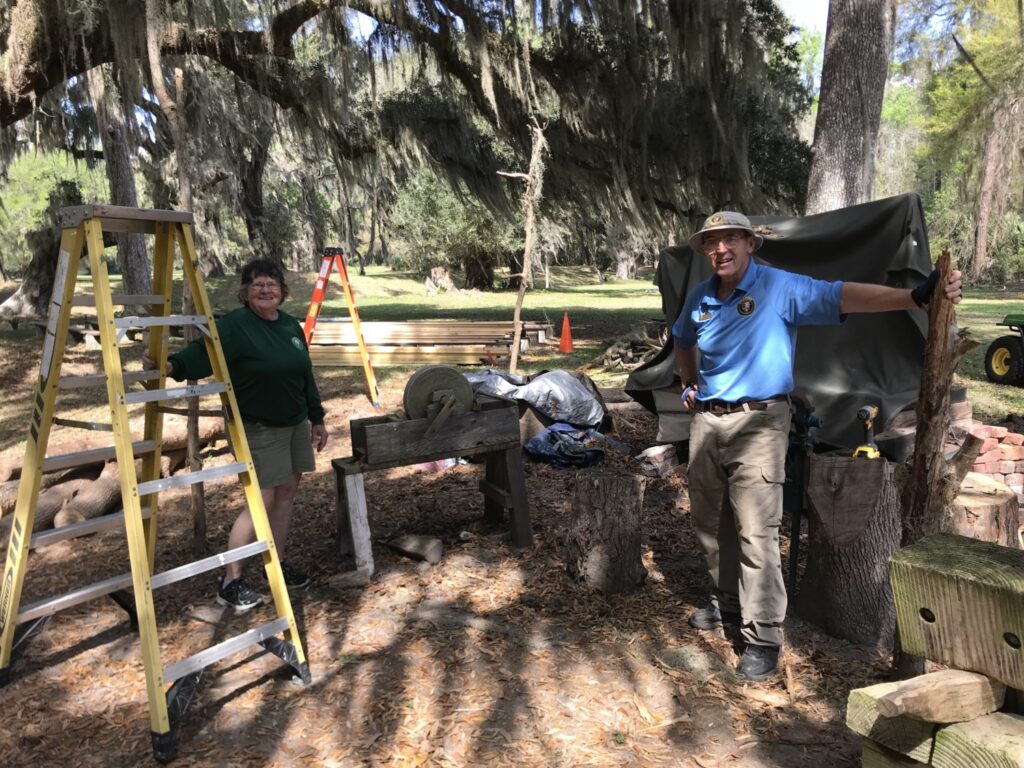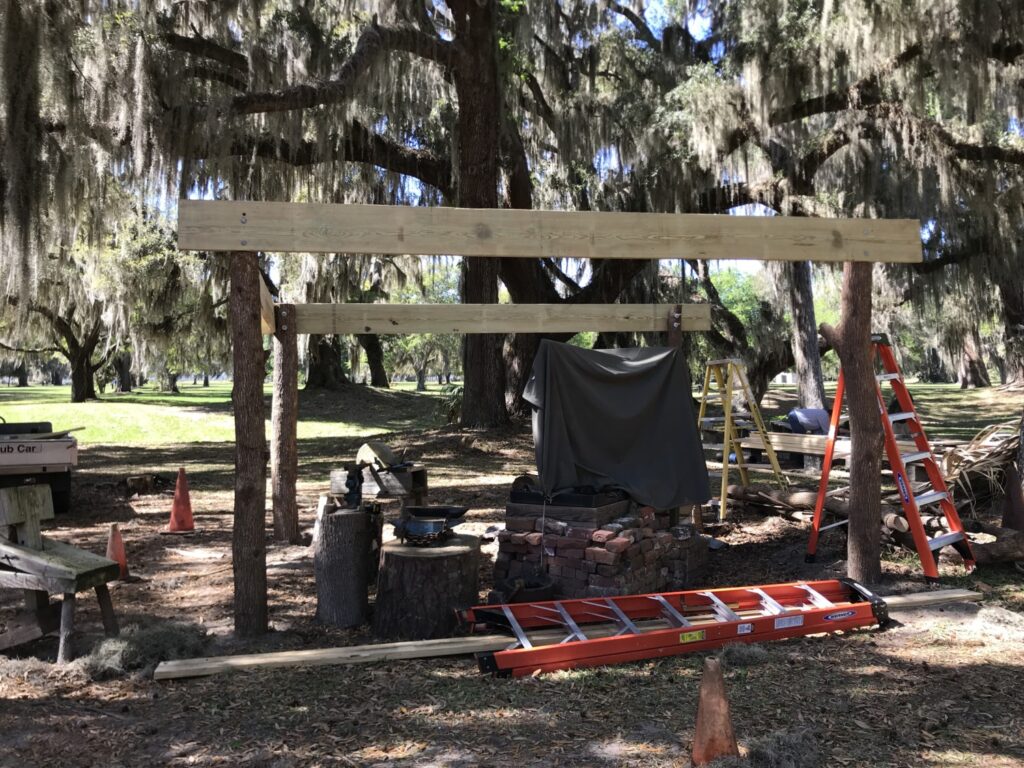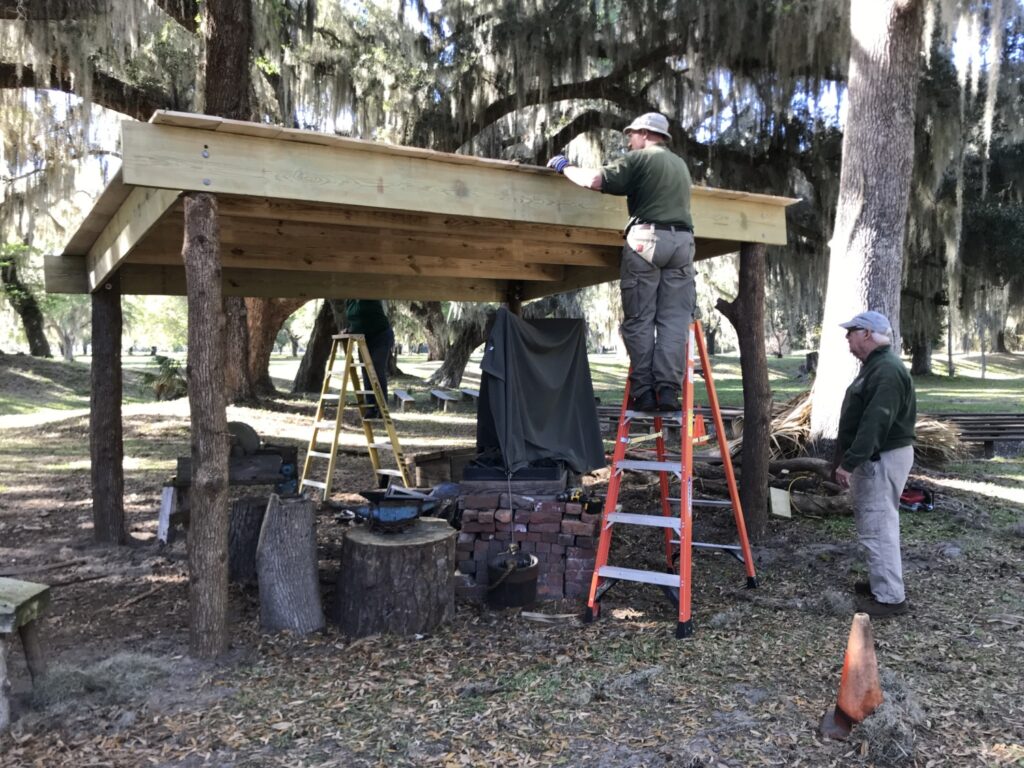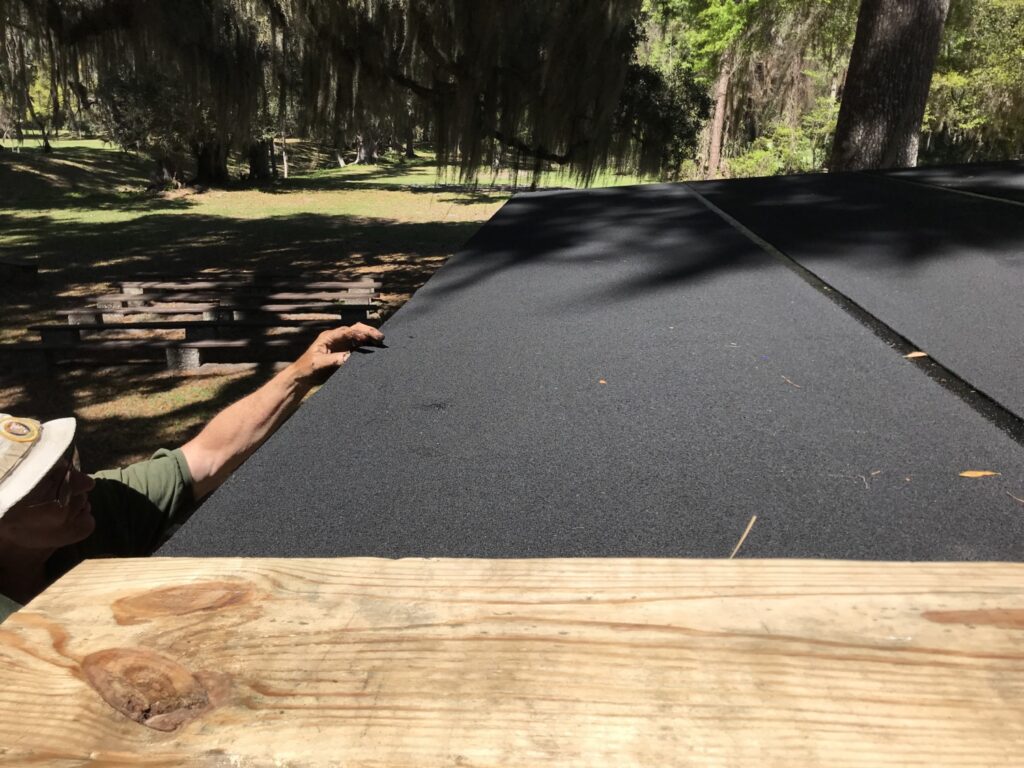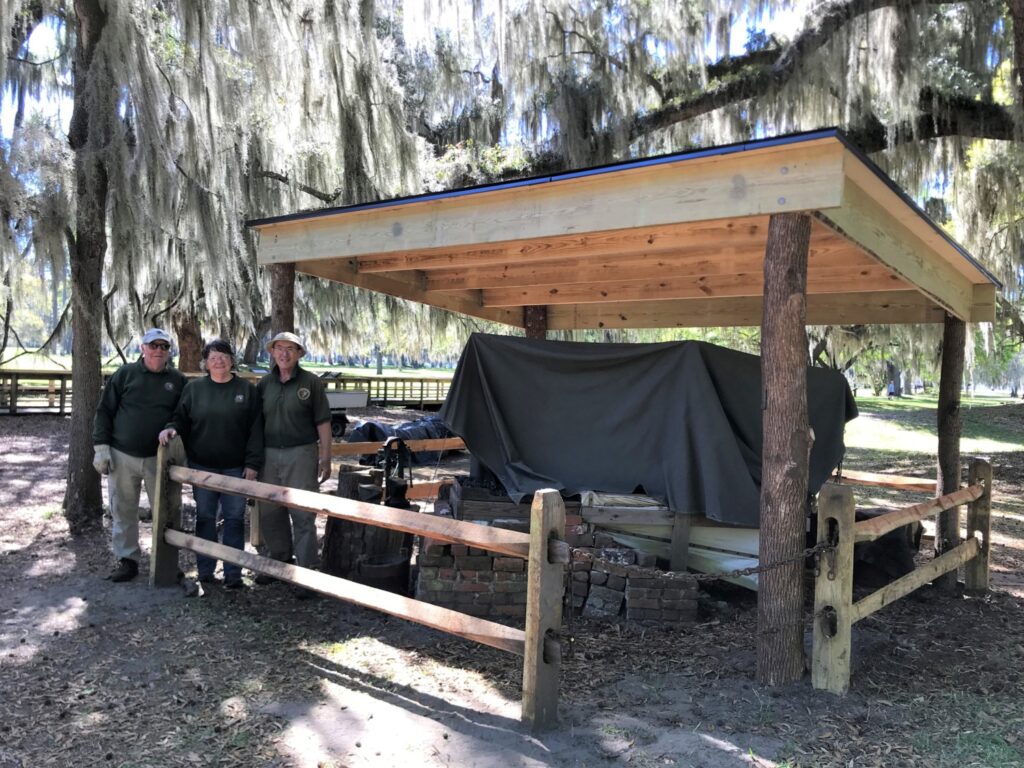Over the last couple of weeks, Tom and Denise and Bob Verba have been roofing the blacksmith’s shop. When Tom and I first came to Fort Frederica National Monument in 2017 there was no blacksmith living history program. Our first year here, Tom did a soldier talk or a musket-firing demonstration. After working at San Juan Island Historical Park, Tom got into historical blacksmithing. He shared his knowledge with Ranger Michael, our boss at the time, and the blacksmithing living history program at Fort Frederica was born.
That first year Tom built a bellows and a “moveable” forge. I put moveable in quotes because Tom and Ranger Michael were the only ones who could move it. The second year, 2019, Tom and Ranger Michael built a shelter for the forge. Then Tom put bricks around the forge and made it look more historically accurate. It was a lot easier to do blacksmithing with the forge in one permanent location.
This year Ranger Phil, our new boss, wanted a more permanent structure around the forge. He and Tom talked about several possibilities, including building tabby walls. After thinking about it and discussing it at length, they both decided that the forge was best left open, but needed a permanent roof. Ranger Michael okayed a budget for the roof, Tom designed it, and Ranger Phil allocated the funds. Then Tom, Denise, and Bob built it.
Out of all the items we have put together at Fort Frederica – the palmetto hut, the bed, the bake oven, and the garden – this is the first one that had money allocated for it. Although the posts are scavenged camphor posts, the roof is a wooden structure covered by roofing materials. It took them a couple of weeks to get all the materials and build the roofing. Tom even had to drive to Savannah one afternoon to get the proper primer layer for the particular roofing material chosen by maintenance.
Because the blacksmith shop is not in the historical area of the park, it did not have to be built in a completely historical manner. The rooftop, which no one can see, is an asphalt roofing material. From the bottom it looks historically appropriate. But the asphalt will protect the roofing material longer.
Tom, Denise, and Bob are very proud of the great job they did roofing the blacksmith’s shop. When we had our very rainy Colonial Day last week, the blacksmith’s shop was the only securely protected living history area.

